
A light jet ties together MMG Insurance’s growing territory.
October 1, 2016
A rare and severe hailstorm struck Eastern Pennsylvania in 2014, causing thousands of dollars in damage. Hail the size of tennis balls shattered windshields, dented cars and smashed through skylights at a local mall.
“Our independent agents’ adjusting staff got overwhelmed,” said Corey Graham, casualty claims manager and vice president of MMG Insurance. “We had to send some of our own staff down to handle claims for our customers.”
The Pennsylvania Insurance Department was allowing out-of-state adjusters to help assess property damage, but getting to Eastern Pennsylvania from Northern Maine – where MMG has been based for more than 100 years – takes at least a day by car or airline. “With the company plane, we can get there in two hours,” said Graham, “so within hours, I had my senior people on the ground working.”
MMG does business in five states: Maine, New Hampshire, Vermont, Pennsylvania and Virginia. The company’s Cessna Citation CJ2 is the linchpin to serving those territories from MMG’s headquarters in Presque Isle, ME, which is near the Canadian border.
“Without the aircraft, we would not be able to maintain our business model,” said Stacy Shaw, vice president and information systems manager. “Exceptional customer service is a hallmark for us, as well as relationships. Being in the market frequently is important to building relationships with our independent agency partners and our policyholders.”
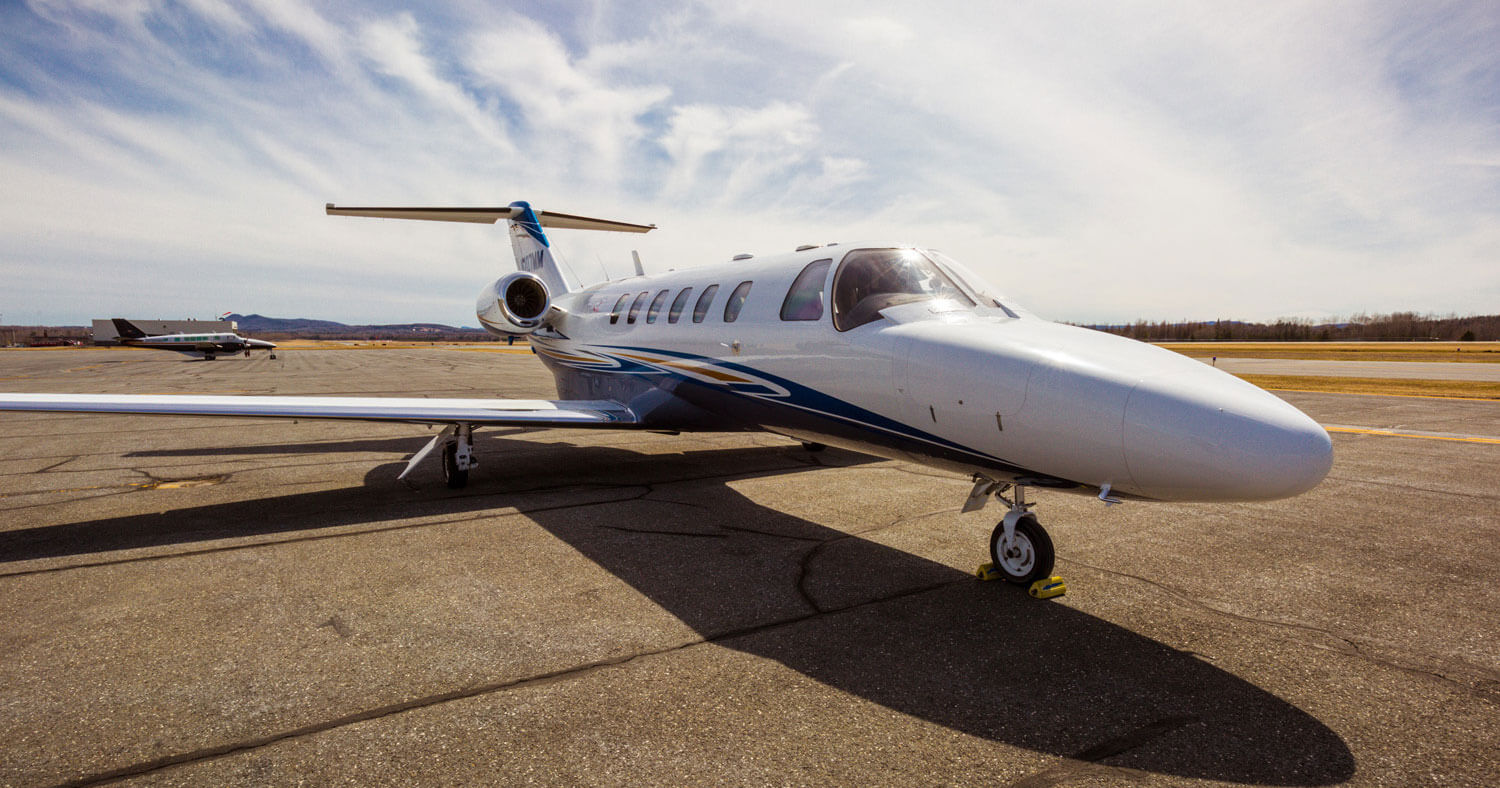
Expanding Territory
In 2006, MMG expanded outside New England, adding Pennsylvania to its territory. “All of a sudden, we had a territory we couldn’t drive to,” explained Shaw. As the manager of the company’s facilities and 32 ground vehicles, Shaw was tasked with launching MMG Insurance’s flight department.
First, Shaw and MMG’s COO conducted a financial analysis to determine what kind of airplane the company could afford and what circumstances would make it more cost-effective than flying on Pen Air, the lone airline that serves Presque Isle from Boston Logan.
Not having any aviation expertise themselves, their next step was to hire a chief pilot, Robert Besaw, who has 40 years of experience as a pilot and maintenance technician. Besaw was instrumental in the search for MG’s first aircraft, a Cessna 421 Golden Eagle, and developing aviation policies and procedures.
“We based our flight manual on the resources on NBAA’s website,” said Besaw. The 421 served the company well for four years, but then MMG expanded to Virginia in 2012. At a cruising speed of 200 knots, the 421 took 4.5 hours to fly from Presque Isle to Virginia. With more than one passenger aboard, it needed to make a tech stop.
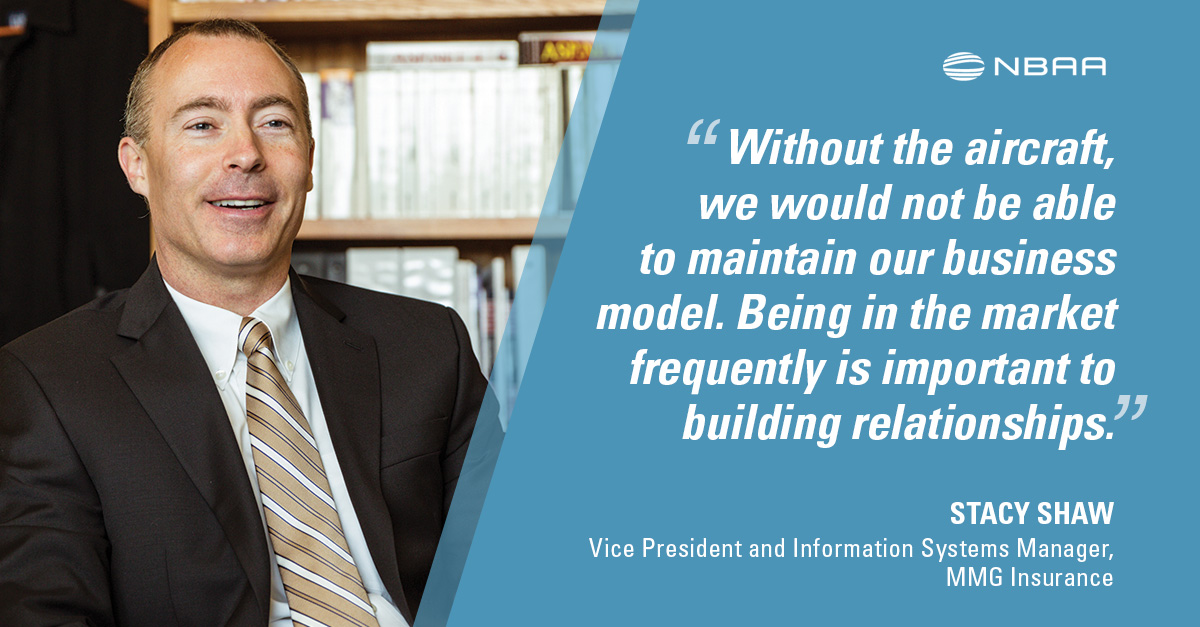
After another financial analysis, MMG sold the 421 and obtained a Cessna Citation CJ2. At 400 knots, it’s not only twice as fast as the 421, it’s faster than Pen Air’s fleet (the carrier’s Saab 340Bs top out at 275 knots).
The CJ2’s speed enabled MMG to fly multiple legs in a single day – for example, the plane is able to drop passengers off at the Pennsylvania branch office, pick up passengers there and fly to Virginia, and pick up more passengers for the return to Presque Isle. MMG also hired a second pilot, Robert Mockler.
The CJ2’s ability to climb above weather gave MMG the flexibility to dispatch more days a year than before – which is important considering Maine’s long, harsh winters – and it required less frequent maintenance than the 421, which went in every 50 hours for an oil change and airworthiness directive for the exhaust system.
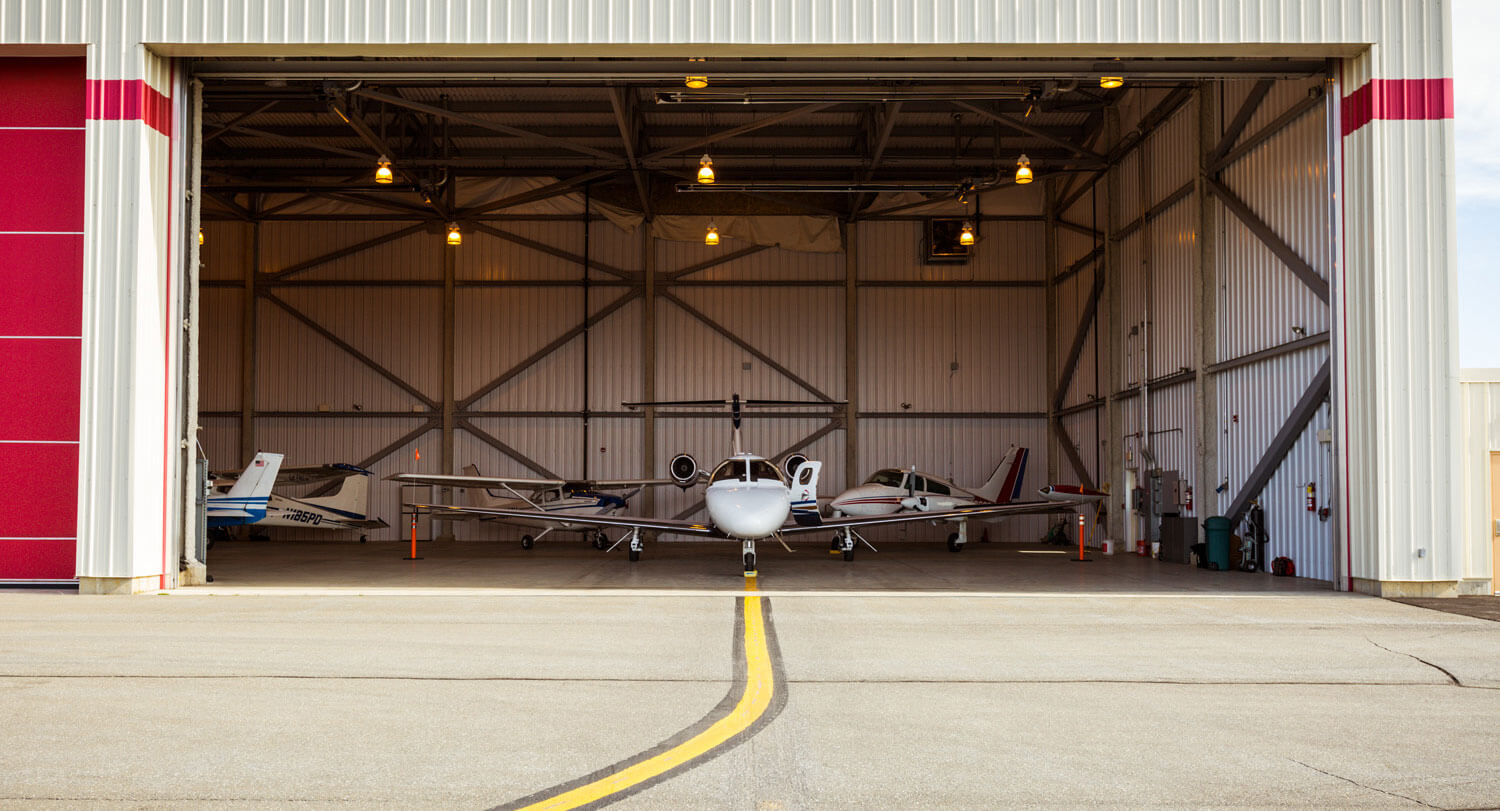
Remote Maintenance
Frequently servicing an airplane was a challenge for MMG because the company doesn’t have an in-house maintenance department, and there are no qualified maintenance facilities at nearby airports. So MMG relies on MAC Air in Portland, ME, which is nearly 300 miles away. “It’s as close as we could get to having our own maintenance without actually having maintenance personnel on staff ,” said Mockler.
“We can comply with the smaller inspections when we’re passing through Portland,” said Besaw. “The larger items fall under the 300-hour inspection, and we fly about 300 hours a year, so we’re only down for maintenance once [a year], over the [year end] holidays.”
After the airplane comes out of maintenance and is fully checked out, Besaw and Mockler usually fly a full load of passengers to meetings in New York, then take four days of recurrent training there. When they’re finished, the passengers are ready to come home.
Combining their recurrent flight training with a passenger mission is one of many ways MMG operates their aircraft for maximum efficiency. In addition to Besaw and Mockler, MMG uses two contract pilots, who each fly for the company about 50 hours a year. When MMG hosts conferences that would require a second airplane – which happens about three times a year – they charter an aircraft from MAC Air.
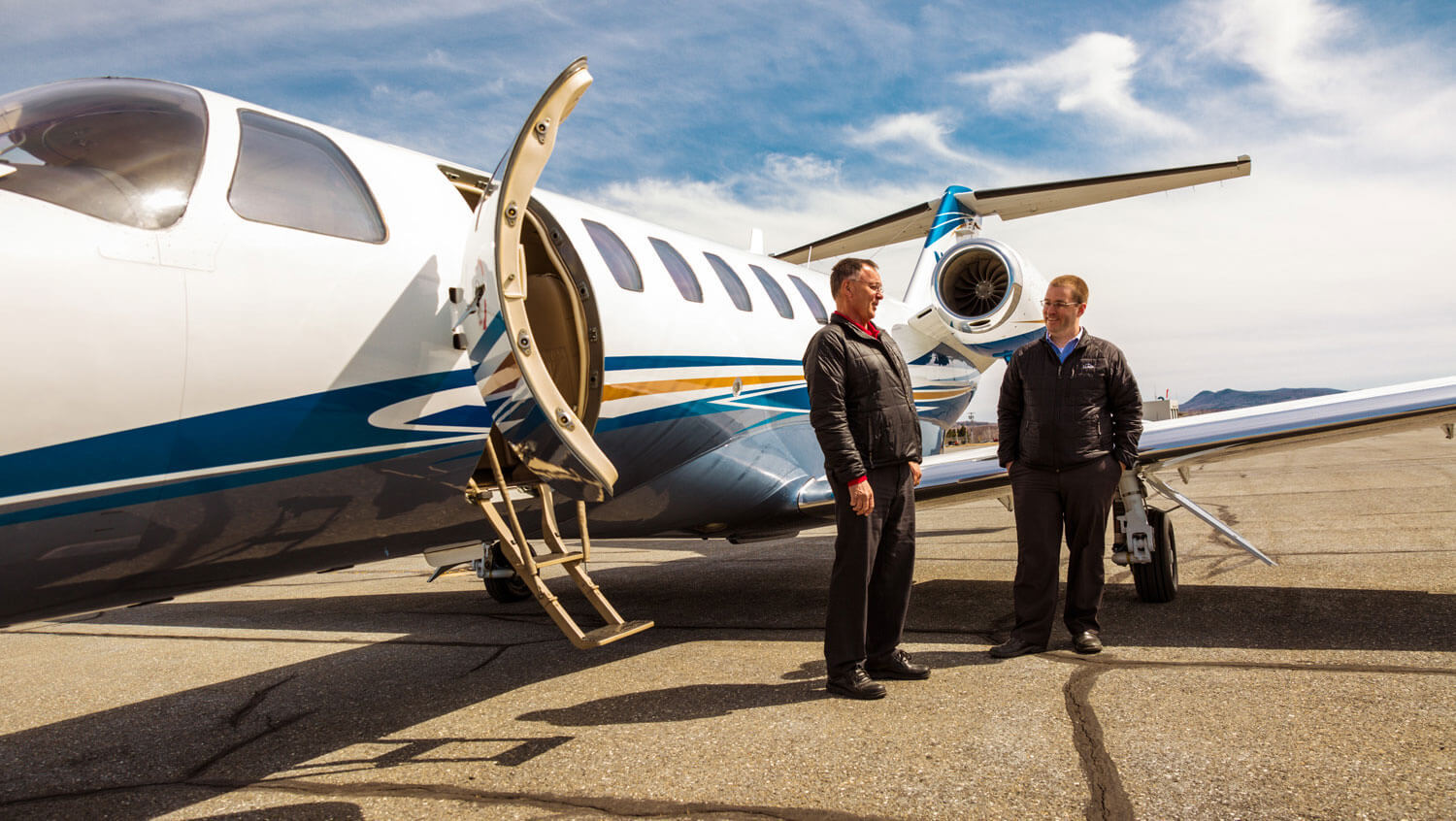
In-House Software
“Our headquarters is at the top of our region. Travel is our biggest challenge,” said Shaw. Besides Besaw and Mockler, Shaw also oversees three travel coordinators who schedule the CJ2, help coordinate the vehicle fleet, and book airline travel, hotel rooms and rental cars.
Some distances are drivable, and employees use cars often. MMG also uses the local airline, Pen Air, when it makes sense. “We have a three-passenger rule,” said Besaw. Company policy usually requires a minimum of three passengers on the six-seat airplane to dispatch the CJ2.
All employees can use the company airplane, and the travel coordinators work to fill flights.
While Shaw oversees the flight department and other travel, his primary responsibility is managing the company’s information systems, directing a staff of 18 software programmers. With this strong in-house capability, MMG developed its own aircraft reservation system, named Passport.
“We manage all of our insurance products in insurance applications, so building small applications is no feat for us,” said Shaw. “We put in place the Passport system, where employees can jump on the intranet and put in all the requirements of their travel and request the company aircraft.”
Learn more at www.mmgins.com.
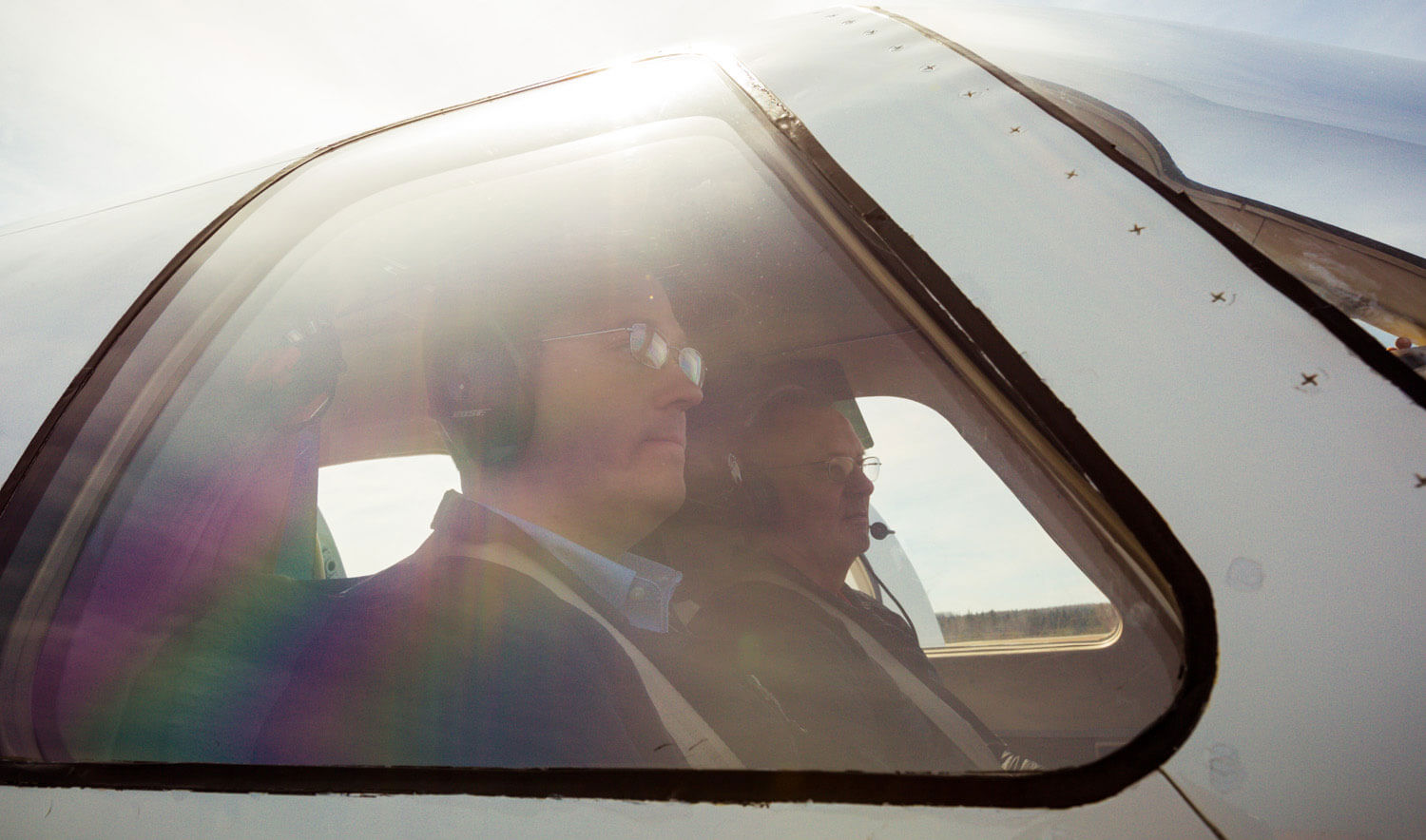
Minimizing “Windshield Time”
When MMG was first considering buying a business airplane, Vice President Stacy Shaw worked with the COO on a financial analysis to see how cost-effective it could be.
“All of our executive team was involved in the decision,” said Shaw. “We did the research and made a proposal to the board. We were able to quantify how many times our people were staying overnight on the road, and how much time our management team spent sitting in airports waiting for commercial flights. What we weren’t able to quantify were the intangibles.”
The intangibles, according to Shaw, are the value to the company of being able to quickly send employees to address issues in distant markets. Trips that would take a full day on the airlines might be a two-hour flight on MMG’s airplane, making the claims experts, product teams and sales staff more responsive and efficient.
The other intangible is being able to bring those employees home the same day, to their families. Because of scant airline connections, employees would often drive five hours or more in a day. “We’re able to minimize the windshield time that our people are putting in vehicles,” said Shaw.
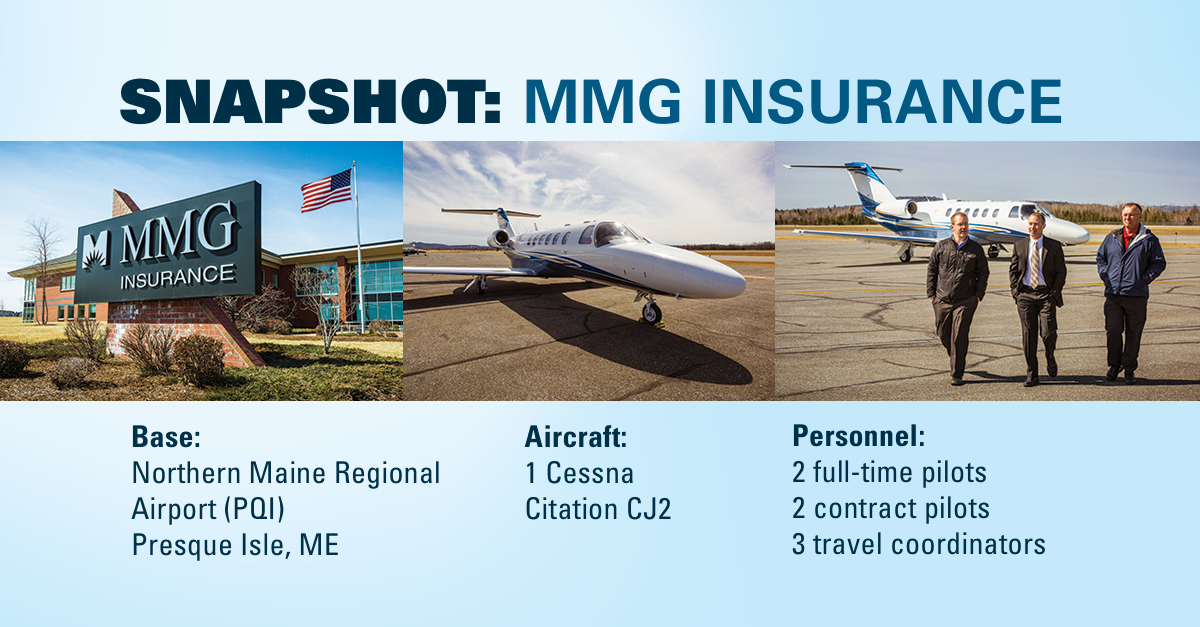


 International Business Aviation Council Ltd.
International Business Aviation Council Ltd.